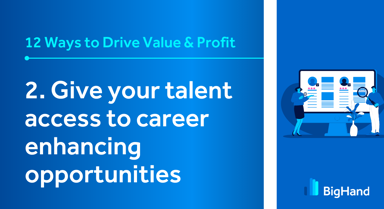Today’s associates seek—and increasingly find—law firms that can allocate work more equitably and help them purposefully curate the legal career of their dreams. Below, we explore how you can do the same to help keep the associates your lawyers have spent years training. Learn how to:
- Overcome the challenges of distributing work more equitably.
- Intentionally provide associates with personalized career development opportunities.
- Significantly enhance your firm's diversity, equity, and inclusion efforts.
What drives lateral hiring and associate retention challenges?
Lateral hiring has increased in the last two years for more than one-third of law firms (32% of NA and 31% of UK). Salary increases alone are not enough to retain highly trained but frustrated associates.
Why? In my conversations, I often hear associates rarely get to work on matters that genuinely interest them. They want more intellectually stimulating and professionally satisfying opportunities to develop their legal skills. Their careers aren’t progressing in their desired direction, and achieving partner status seems like a distant dream.
When another firm promises your high-performing associates they can have it all, they eagerly jump ship to build the careers they’ve always wanted.
Meanwhile, firms facing talent shortages spend time, money, and effort recruiting, onboarding, and training more new lawyers. It’s a relentless, costly merry-go-round that doesn’t solve the underlying issues driving associates away.
Associate career progression challenges: A critical lack of visibility
The findings of BigHand’s Legal Resource Management Report echo the sentiments I hear in the field. Most firm leaders want to meet the needs of a new generation of lawyers. But they have little to no data they can use to gain clarity into:
- The types of work being delegated (31% NA, 33% UK).
- The capacity and utilization of employees (35% NA, 31% UK),
- Opportunities available for associate career development (54% NA, 55% UK), or
- Lawyer training and development needs (51% NA, 49% UK).
Allocating legal work has long been an opaque and manual process. Partners tend to send assignments to the same, familiar associates based on proximity and friendship. This minimises opportunities for other associates. Plus, with no visibility into available work, associates cannot raise their hands for assignments that align with their interests or skills.
Lack of visibility perpetuates the long-standing unconscious biases against lawyers from diverse backgrounds, which is a growing challenge. Currently, 69% of NA and 52% of UK firms report increased client pressure to resource matters with diversity in mind.
Firm leaders tell me they want something better than the traditional “hallway” approach that fails to distribute work equitably or satisfy DEI requirements, especially as more firms shift to hybrid work models. It’s clear that hearts and minds align when nearly half of the surveyed firms now consider reviewing career development options for associates a priority (49% NA, 48% UK).
However, without the transformative power of data analytics, the path to actual progress remains obscured. That’s where legal resource management technology lights the way.
What does effective legal resource management look like?
Firms that leverage resource management technology effectively allocate work in a data-driven manner, ensuring that associates from all backgrounds fairly access equal opportunities.
Using data analytics across the entire resource management lifecycle gives you a holistic view of associate performance and a comprehensive understanding of the resources needed to deliver client work effectively and efficiently. Your firm can distribute work based on workload, expertise, and availability rather than subjective factors like personal relationships or favouritism.
Work allocation analytics uproot patterns of bias and inequity. They raise a red flag if certain associates consistently receive less desirable work or don’t get opportunities to work on certain matter types. Insights like this allow you to eliminate the root causes of associate dissatisfaction.
Associates can see what work is available and how it is distributed. Seeing how allocation decisions are made boosts associates’ confidence that they’re treated fairly. They can also volunteer for assignments to drive their chosen careers.
These benefits help you keep your firm’s most valued associates while improving DEI outcomes. Get in touch with me if you want to speak about how Resource Management can help your firm.






